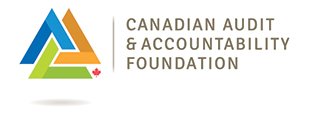Conceptual Framework
Our 2006 Guide to Strengthening Public Accounts Committees identified six enablers of PAC effectiveness:
- Formal and defined framework of powers and practices
- Government commitment
- Capacity to exercise the committee’s powers
- Strong committee leadership
- Supportive working relationship with the legislative auditor
- Public and media involvement
The following table outlines how each Attribute relates to the original Enablers of PAC Effectiveness.
Table 1: How Attributes relate to Enablers of PAC Effectiveness
ENABLER | ATTRIBUTE |
|---|---|
Supportive working relationship with the legislative auditor |
Relationship with the Legislative Auditor |
Enabler 1
Formal and defined framework of powers and practices
The 2006 PAC Guide stated that “the key to a successful committee is the formal and defined framework of powers and practices—without this framework, even the most committed Chair and committee members will have significant challenges in making sure that the committee is effective.”
Attribute 1 – Powers and Practices – outlines the powers a PAC needs to function effectively.
Enabler 2
Government commitment
The 2006 PAC Guide emphasized the importance of government commitment to the oversight process. As one Canadian legislative auditor stated in 2002, “ultimately, a well functioning Public Accounts Committee is one in which the government plays a more arms-length role on the committee, thereby demonstrating its commitment to letting the committee do what it is created to do—holding government accountable for its stewardship responsibilities.”
Attribute 2 – Legislative Support – looks at the role of the legislature in empowering the PAC. It also emphasizes the important role of the PAC Chair and Vice-Chair in communicating with House Leaders and Whips from all parties about taking the PAC’s non-partisan role seriously and in minimizing substitutions. This Attribute makes a distinction between the role of the government and the role of the legislature in helping to create an enabling environment for the PAC.
Attribute 3 – Government Support – emphasizes the ongoing importance of the role of government in creating an enabling environment for the PAC.
Enabler 3
Capacity to exercise the committee’s powers
A formal and defined framework of powers and practices is an important prerequisite for an effective PAC. However, a gap often exists between the powers granted to a PAC and the use of those powers. Two of the Attributes are linked to strengthening the PAC’s capacity to exercise its powers.
Attribute 4 – Continuity and Training – relates to the continuity of membership and the professional skills and experience of members.
Attribute 5 – Staffing and Budget – relates to the budgetary and the skilled staff support (including clerks and research support) that a PAC needs to exercise its powers.
Enabler 4
Strong committee leadership
On strong committee leadership, our PAC Guide highlighted the importance of the credibility and capabilities of the Chair, particularly in ensuring the ongoing non-partisan orientation of the committee. Two Attributes build on the concept of strong committee leadership.
Attribute 6 – Planning – addresses the importance of short-term planning and the prospective positive impacts of longer-term planning. Planning can significantly enhance the effectiveness of PACs. In practice, strong committee leadership on the part of the Chair and Vice-Chair drives effective short-term and long-term planning.
Attribute 7 – Constructive Partisanship – explains the importance of constructive working relationships, with a focus on improving the administration of government policy rather than focusing on policy itself. The leadership of the Chair—and indeed the Vice-Chair—is very important in this regard.
Enabler 5
Supportive working relationship with the legislative auditor
According to the 2006 PAC Guide, “a significant factor contributing to the implementation of a committee’s framework of powers and practices is its relationship with the legislative auditor. This should be a close and mutually supportive relationship built out of shared trust and unity of purpose, but with distinct roles and independence of action.” Three of the Attributes emphasize key areas of interaction and mutual dependence between the PAC and the legislative auditor.
Attribute 8 – Relationship with the Legislative Auditor – emphasizes the importance of the relationship between the PAC and the legislative auditor. This Attribute addresses the reliance of the PAC on the legislative auditor for independent information; the role the PAC can play in supporting concerns of the auditor regarding mandate, resources and access to information; and the contribution of the legislative auditor in helping to ensure PAC hearings are more effective.
Attribute 9 – Reporting – highlights the role of the PAC in considering, adopting and in some case supplementing the recommendations and observations of the legislative auditor.
Attribute 10 – Follow-up Process – looks at how the PAC can work with the legislative auditor to ensure that government is implementing the recommendations of the legislative auditor and the PAC.
Enabler 6
Public and media involvement
The final two Attributes focus on the measurement of PAC impact and the communication of that impact to the legislature, public and media. The PAC Guide made a brief reference to communications—a half page in total. Our orientation sessions for Canadian PACs, recent sessions of CCPAC, and the 2009 meeting of the PAC Advisory Group placed increased emphasis on the ability of PACs to communicate their value-added. The Guide also contained a pull-out section emphasizing how PACs could measure their effectiveness.
Attribute 11 – Performance and Impact – emphasizes the potential for PACs to assess and review their impact or the results they are achieving for their constituents through their oversight work.
Attribute 12 – Communication – highlights the increasing discourse regarding the role of the PAC in communicating its results to the legislature, public and media and in developing communications tools, including news releases.
- PreviousBackground
- References


